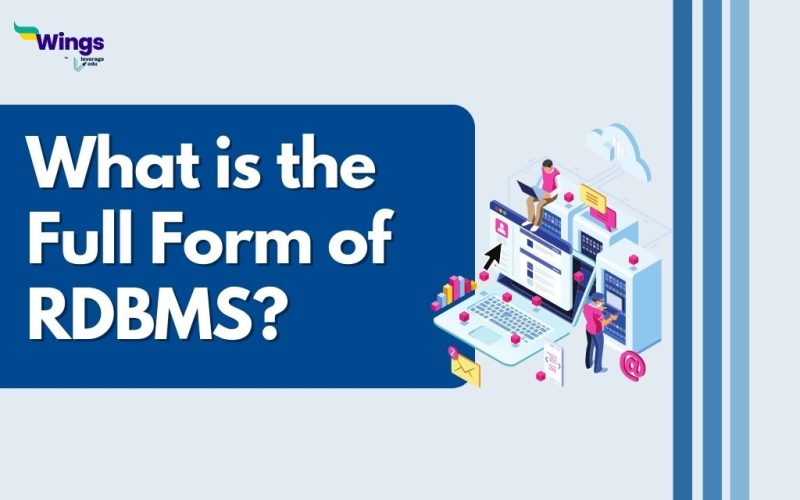The RDBMS full form stands for Relational Database Management System, a type of database management system (DBMS) that is based on the relational model of data. In a relational database, data is organized into tables (also known as relations) and is easily accessible using Structured Query Language (SQL).
RDBMS Full Form: Origin and Functions
Table of Contents [show]
The relational model is a data representation method that E.F. Codd, a researcher at IBM, created in the 1970s to ensure logic and consistency in data management. The relational model makes it possible for any table to link with another table through a common attribute. The relational model avoids using hierarchical or network structures to sort data, but instead uses a flat structure where data is stored, accessed, and related in tables without modifying the tables that contain them.
Examples of RDBMS
Some of the popular and widely used examples of RDBMS are:
- Oracle: Oracle Database is one of the oldest and most powerful RDBMS in the market. It offers advanced features such as partitioning, clustering, replication, analytics, etc. It is suitable for large-scale and complex applications that require high performance and availability.
- MySQL: MySQL is an open-source and free RDBMS that is widely used for web development and online applications. It supports various programming languages such as PHP, Java, Python, etc. It is easy to install and use. It offers features such as replication, caching, full-text search, etc.
- SQL Server: SQL Server is a Microsoft product that provides a comprehensive RDBMS solution for Windows platforms. It supports various programming languages such as C#, VB.NET, ASP.NET, etc. It offers features such as encryption, compression, reporting services, etc.
Advantages of RDBMS
Some of the advantages of RDBMS are:
- Easy to understand and use, as data is represented in a tabular format that resembles spreadsheet files.
- Flexible and scalable, as data can be added, modified, or deleted without affecting the structure or performance of the database.
- Reliable and robust, as data is protected from corruption, loss, or unauthorized access by using various mechanisms and techniques.
- Efficient and fast; data can be retrieved or updated using optimised queries and indexes.
- Compatible and interoperable, as data can be exchanged or integrated with other systems or applications using standard formats and protocols.
Must Read: What is the Full Form of a Computer?
Must Read: What is the Full Form of DCA in Computer?
We hope that this blog helped you understand the RDBMS full form and its origin, functions, examples and advantages of using it. To discover more full forms daily, stay tuned to our General Knowledge page. You can also check out this full forms list of 300+ alphabetically arranged acronyms.
 One app for all your study abroad needs
One app for all your study abroad needs















 45,000+ students trusted us with their dreams. Take the first step today!
45,000+ students trusted us with their dreams. Take the first step today!
